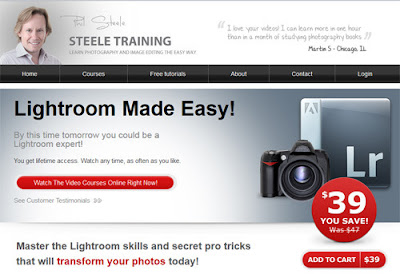 When I view other photographers' work, I make subjective judgment calls about two things: The photographs themselves and the photographers who snapped them. I'm guessing many of you do the same. Possibly everyone does regardless of who or what they are: photographers and non-photographers alike.
When I view other photographers' work, I make subjective judgment calls about two things: The photographs themselves and the photographers who snapped them. I'm guessing many of you do the same. Possibly everyone does regardless of who or what they are: photographers and non-photographers alike.For the most part, I lump my opinions of other shooters and their photos into two, overall categories: Craft and Creativity. Obviously, I'm talking about my opinions of them as photographers, not who they are as people in general.
I see plenty of photos which seem to reflect a goodly amount of creativity but, unfortunately, are sadly lacking in craft. Conversely, I see lots of images which reflect good craft skills but don't really score high marks in the areas of creativity. A lot of my images are that way: good craft skills, not so impressive creatively. Then there's those photos which reveal wonderful craft skills as well as heaping helpings of creativity. Those sorts of photos are the best!
My seemingly not-so-rosy assessment of my own work causes me to temper my judgments about other photographers' work. I do this by considering the intent of the photos I'm judging. Especially, when the work is paid work: anything from glamour or fashion pics to wedding photos to senior portraits and beyond. You see, for the most part, few clients hire photographers for their prodigious creativity. They hire them for their abilities to consistently produce competent work, craft-wise.
I'm not saying clients don't appreciate creativity, they mostly do. They just aren't paying photographers to be overly and wildly creative. They're paying them to deliver the goods and "the goods," in this case, are competent photographs with moderate levels of creativity applied. Actually, often a bit more than moderate amounts... but not *that* much more. That's why I consider photography to be more of a craft than art. Sure, there's some photography that's nearly pure art, but most of it is much more craft than art.
Even with art, be it painters or sculptors or writers or musicians or something else, creativity isn't the only criteria signifying great art or great artists. Craft, which has as a subset, technique, also plays a significant and important role. Often enough, especially with photography, craft plays the most important role. Craft, of course, is generally synonymous with skills: technical skills as well as artistic skills like composition and more. Things that have artistic elements, by the way, aren't necessarily "art," per se.
Many people believe artists are born artists. In other words, their creativity (expressed by their art) isn't something they were taught and learned. Instead, it's something they naturally have, as in a gift. For those people, teaching and learning is mostly designed to help them realize or maximize their full potential, a potential they, apparently, were born with.
There's probably much truth in that perception. Fortunately, that doesn't mean people who aren't born naturally-gifted artists cannot be great craftsmen in an artistic sense. But people like those, which comprises most of us, need to focus on elevating and enhancing skills, craft skills, while applying whatever levels of creativity they've been naturally bestowed with. Leastwise, if they hope to be successful craftsmen and women. Fortunately for all of us, those craft skills are something that can be taught and learned.
The two pretty girls at the top enjoying each others company are Ash and Tara. (Click to enlarge.)















